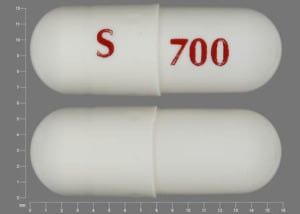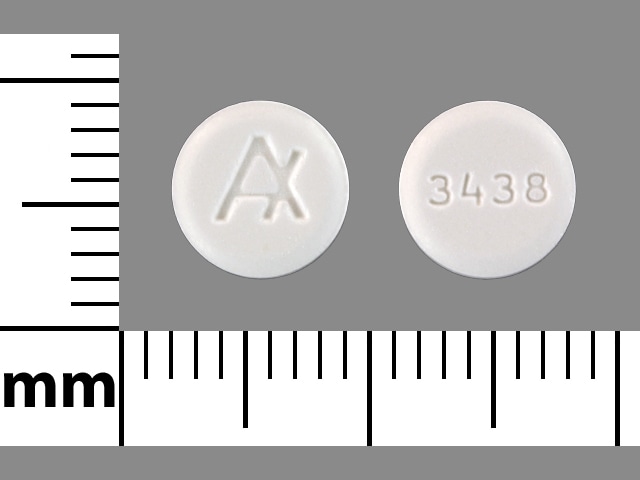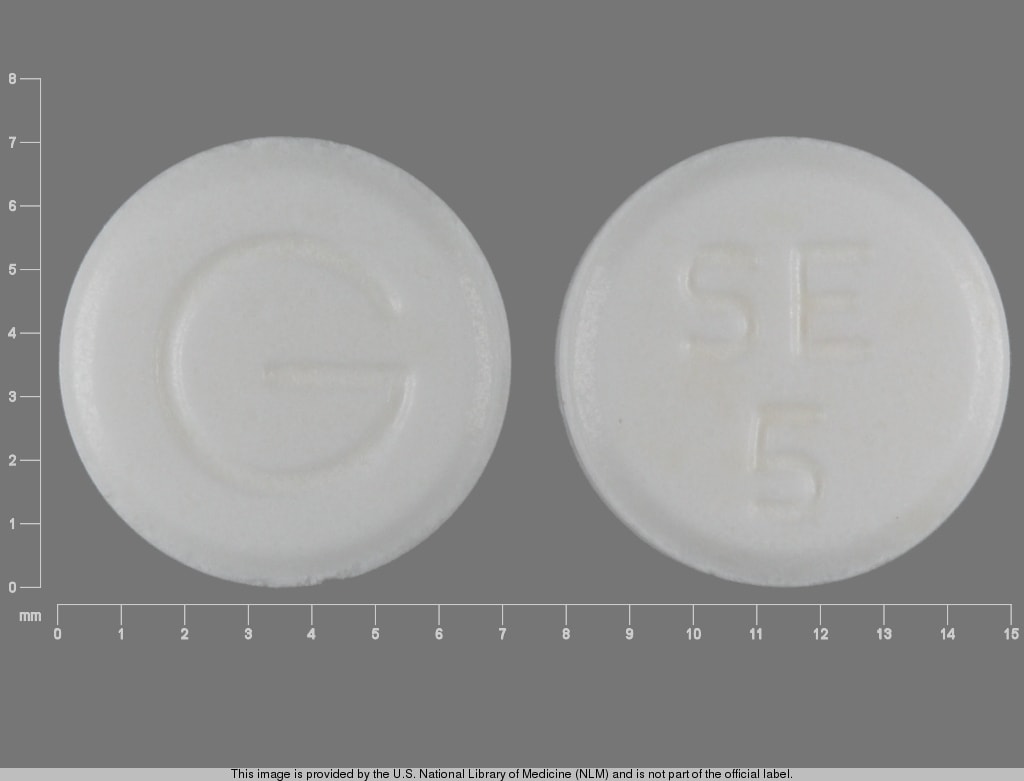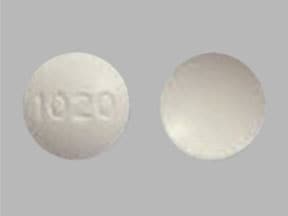Boxed Warning
Suicidal thoughts and behaviors (transdermal patch):
Antidepressants increased the risk of suicidal thoughts and behaviors in pediatric and young adult patients in short-term studies. Closely monitor all antidepressant-treated patients for clinical worsening and for emergence of suicidal thoughts and behaviors.
Selegiline transdermal patch is contraindicated in patients less than 12 years of age because of an increased risk of hypertensive crisis.
Dosage Forms
Excipient information presented when available (limited, particularly for generics); consult specific product labeling. [DSC] = Discontinued product
Capsule, Oral, as hydrochloride:
Eldepryl: 5 mg [DSC]
Generic: 5 mg
Patch 24 Hour, Transdermal:
Emsam: 6 mg/24 hr (1 ea, 30 ea); 9 mg/24 hr (1 ea, 30 ea); 12 mg/24 hr (1 ea, 30 ea)
Tablet, Oral, as hydrochloride:
Generic: 5 mg
Tablet Disintegrating, Oral, as hydrochloride:
Zelapar: 1.25 mg [contains aspartame; grapefruit flavor]
Pharmacology
Mechanism of Action
Potent, irreversible inhibitor of monoamine oxidase (MAO). Selegiline has a greater affinity for MAO-B compared to MAO-A (intestinal MAO is predominantly type A; in the brain, both isoenzymes exist). In the CNS, MAO plays a major role in the catabolism of dopamine, serotonin, norepinephrine, and epinephrine. At lower doses, selegiline can serve as a selective inhibitor of MAO-B; however, as selegiline concentrations increase, MAO-B selectivity is lost. Selegiline may increase dopaminergic activity by interfering with dopamine reuptake at the synapse. Effects may also be mediated through its metabolites, including amphetamine and methamphetamine, which interfere with neuronal uptake and enhance release of several neurotransmitters (eg, norepinephrine, dopamine, serotonin). The extent to which these metabolites contribute to the effects of selegiline are unknown. Plasma concentrations achieved via administration of oral dosage forms in recommended doses confer selective inhibition of MAO type B. When administered transdermally, selegiline achieves higher blood levels with significantly lower exposure for all metabolites when compared with oral dosing. Attention to the dose-dependent nature of selegiline’s selectivity is necessary if it is to be used without diet and concomitant drug restrictions.
Pharmacokinetics/Pharmacodynamics
Absorption
Capsule/tablet: Bioavailability increases 3- to 4-fold when taken with food
Orally disintegrating tablet: Rapid; greater bioavailability than capsule/tablet. Food decreases Cmax and AUC to ~60% of fasting state.
Transdermal: 25% to 30% (of total selegiline content) over 24 hours
Metabolism
Hepatic, primarily via CYP2B6, CYP2C9, CYP3A4, and CYP2A6 (minor) to active (N-desmethylselegiline, amphetamine, methamphetamine) and inactive metabolites
Excretion
Urine (primarily metabolites); feces
Half-Life Elimination
Oral: 10 hours
Protein Binding
Protein binding: 85% to 90%
Use in Specific Populations
Special Populations: Renal Function Impairment
Orally disintegrating tablets: Patients with moderate renal impairment (CrCl 31 to 50 mL/minute) had a 34% to 67% increase in exposure to the active metabolites methamphetamine and amphetamine. Patients with end-stage renal disease off dialysis had a 4-fold increase in exposure to the active metabolites methamphetamine and amphetamine.
Special Populations: Hepatic Function Impairment
Orally disintegrating tablets: Patients with mild hepatic impairment (Child-Pugh score 5 to 6) had a 1.5-fold higher AUC and Cmax of selegiline and a 1.4-fold and 1.2-fold higher, respectively, AUC and Cmax of the metabolite desmethylselegiline. In patients with moderate hepatic impairment (Child-Pugh score 7 to 9), AUC of selegiline and desmethylselegiline increased 1.5-fold and 1.8-fold, respectively. Patients with severe hepatic impairment (Child-Pugh score >9) had a 4-fold increased AUC of selegiline, 3-fold increased Cmax of selegiline, 1.25-fold increased AUC of desmethylselegiline and 50% reduced Cmax of desmethylselegiline.
Special Populations: Elderly
Systemic exposure is about twice as high in elderly patients when given a single 10 mg oral dose.
Use: Labeled Indications
Parkinson disease: Adjunct in the management of patients with Parkinson disease being treated with levodopa/carbidopa who exhibit deterioration in the quality of their response to this therapy (oral products).
Major depressive disorder: Treatment of major depressive disorder (MDD) in adults (transdermal patch)
Use: Off Label
Attention-deficit/hyperactivity disorder (ADHD)b
Data from a controlled, double-blind study supports the use of selegiline in the treatment of attention-deficit/hyperactivity disorder (ADHD) Akhondzadeh 2003. Data from a randomized, double-blind study also supports the use of selegiline in the treatment of attention-deficit/hyperactivity disorder (ADHD) Mohammadi 2004. Additional trials may be necessary to further define the role of selegiline in this condition.
Early Parkinson's diseasec
Clinical experience suggests the utility of selegiline in the treatment of early Parkinson's disease Collier 1992. Additional trials may be necessary to further define the role of selegiline in this condition.
Contraindications
Hypersensitivity to selegiline or any component of the formulation; concomitant use of meperidine
Orally disintegrating tablet: Additional contraindications: Concomitant use of methadone, other MAO inhibitors (selective or non-selective), propoxyphene, or tramadol within 14 days of selegiline; concomitant use with cyclobenzaprine, dextromethorphan, or St John’s wort
Transdermal: Additional contraindications: Pheochromocytoma; patients <12 years of age; use of carbamazepine, serotonin reuptake inhibitors (including SSRIs and SNRIs), clomipramine, imipramine, tramadol, propoxyphene, methadone, pentazocine, and dextromethorphan (concurrently, within 2 weeks of selegiline discontinuation, or selegiline use within 4 to 5 half-lives [approximately 1 week for most medications; 5 weeks for fluoxetine] of discontinuation of the contraindicated drug)
Canadian labeling: Additional contraindications (not in US labeling): Severe psychosis; severe dementia; active peptic ulcer; extrapyramidal disorders, including excessive tremor or tardive dyskinesia
Dosage and Administration
Dosing: Adult
Depression: Transdermal: Initial: 6 mg/24 hours once daily; target dose: 6 mg/24 hours once daily; may titrate based on clinical response in increments of 3 mg/day every 2 weeks up to a maximum of 12 mg/24 hours
Parkinson disease:
Capsule, tablet: 5 mg twice daily with breakfast and lunch with concomitant carbidopa/levodopa therapy; maximum: 10 mg/day.
Orally disintegrating tablet: Initial: 1.25 mg once daily with concomitant carbidopa/levodopa therapy for at least 6 weeks; may increase to 2.5 mg once daily based on clinical response and tolerability (maximum: 2.5 mg/day).
Concomitant therapy with carbidopa/levodopa: After 2 to 3 days, an attempt may be made to reduce the dose of levodopa/carbidopa by 10% to 30%. Further reductions of levodopa/carbidopa may be possible during continued selegiline therapy.
Discontinuation of therapy: When discontinuing antidepressant treatment that has lasted for >3 weeks, gradually taper the dose (eg, over 2 to 4 weeks) to minimize withdrawal symptoms and detect reemerging symptoms (APA 2010; WFSBP [Bauer 2015]). Reasons for a slower titration (eg, over 4 weeks) include use of a drug with a half-life <24 hours (eg, paroxetine, venlafaxine), prior history of antidepressant withdrawal symptoms, or high doses of antidepressants (APA 2010; Hirsch 2019). More severe symptoms have been associated with MAOIs; more conservative tapers may be necessary (Haddad 2001; Shelton 2001). If intolerable withdrawal symptoms occur, resume the previously prescribed dose and/or decrease dose at a more gradual rate (Shelton 2001). Select patients (eg, those with a history of discontinuation syndrome) on long-term treatment (>6 months) may benefit from tapering over >3 months (WFSBP [Bauer 2015]). Evidence supporting ideal taper rates is limited (Shelton 2001; WFSBP [Bauer 2015]).
MAO inhibitor recommendations:
Switching to or from an MAO inhibitor intended to treat psychiatric disorders:
Allow 14 days (or a time equal to 4 to 5 half-lives of the drug) to elapse between discontinuing an alternative antidepressant without long half-life metabolites (eg, TCAs, paroxetine, fluvoxamine, venlafaxine) or MAO inhibitor intended to treat psychiatric disorders and initiation of selegiline (APA [Gelenberg 2010]).
Allow 5 weeks to elapse between discontinuing fluoxetine (with long half-life metabolites) intended to treat psychiatric disorders and initiation of selegiline.
Allow 14 days to elapse between discontinuing selegiline and initiation of an alternative antidepressant or MAO inhibitor intended to treat psychiatric disorders.
Dosing: Geriatric
Parkinson disease:
Capsule, tablet: ≤5 mg/day (when combined with levodopa) is recommended by some clinicians to decrease the enhanced dopaminergic side effects (Olanow 2001).
Orally disintegrating tablet: Refer to adult dosing.
Depression: Transdermal: 6 mg/24 hours once daily
Discontinuation of therapy: Refer to adult dosing.
MAO inhibitor recommendations: Refer to adult dosing.
Dosing: Pediatric
Depression: Adolescents >17 years: Transdermal: Refer to adult dosing.
Discontinuation of therapy: Refer to adult dosing.
MAO inhibitor recommendations: Refer to adult dosing.
Administration
Oral: Orally disintegrating tablet: Remove tablet from pouch immediately before administering. Administer in morning before breakfast; do not swallow; place on top of tongue and allow to dissolve. Avoid food or liquid 5 minutes before and after administration.
Topical: Transdermal: Apply to clean, dry, intact skin to the upper torso (below the neck and above the waist), upper thigh, or outer surface of the upper arm. Do not apply to skin that is hairy, oily, irritated, broken, scarred, or calloused. Do not place under tight clothing. Apply at the same time each day and rotate application sites. Wash hands with soap and water after handling. Avoid touching the sticky side of the patch. Discard any used or unused patches by folding adhesive ends together and discard properly in trash.
Dietary Considerations
Avoid or limit tyramine-containing foods/beverages (product and/or dose-dependent). Some examples include aged or matured cheese, air-dried or cured meats (including sausages and salamis), fava or broad bean pods, tap/draft beers, Marmite concentrate, sauerkraut, soy sauce and other soybean condiments. Food’s freshness is also an important concern; improperly stored or spoiled food can create an environment where tyramine concentrations may increase (Walker 1996).
Transdermal: 9 mg/24 hours or 12 mg/24 hours: Avoid tyramine-rich foods or beverages beginning the first day of treatment and for 2 weeks after discontinuation or dose reduction to 6 mg/24 hours.
Orally disintegrating tablet: Do not take with food or liquid.
Some products may contain phenylalanine.
Storage
Capsule, tablet, transdermal: Store at 20°C to 25°C (68°F to 77°F). Store patch in sealed pouch and apply immediately after removal. Protect capsule and tablet from light.
Orally disintegrating tablet: Store at 25°C (77°F); excursions permitted to 15°C to 30°C (59°F to 86°F). Use within 3 months of opening pouch and immediately after opening individual blister.
Selegiline Images
Drug Interactions
Alcohol (Ethyl): May enhance the adverse/toxic effect of Monoamine Oxidase Inhibitors. Avoid combination
Alfuzosin: May enhance the hypotensive effect of Blood Pressure Lowering Agents. Monitor therapy
Alpha-/Beta-Agonists (Indirect-Acting): Monoamine Oxidase Inhibitors may enhance the hypertensive effect of Alpha-/Beta-Agonists (Indirect-Acting). While linezolid is expected to interact via this mechanism, management recommendations differ from other monoamine oxidase inhibitors. Refer to linezolid specific monographs for details. Avoid combination
Alpha1-Agonists: Monoamine Oxidase Inhibitors may enhance the hypertensive effect of Alpha1-Agonists. While linezolid is expected to interact via this mechanism, management recommendations differ from other monoamine oxidase inhibitors. Refer to linezolid specific monographs for details. Avoid combination
Amifampridine: Agents With Seizure Threshold Lowering Potential may enhance the neuroexcitatory and/or seizure-potentiating effect of Amifampridine. Monitor therapy
Amifostine: Blood Pressure Lowering Agents may enhance the hypotensive effect of Amifostine. Management: When amifostine is used at chemotherapy doses, blood pressure lowering medications should be withheld for 24 hours prior to amifostine administration. If blood pressure lowering therapy cannot be withheld, amifostine should not be administered. Consider therapy modification
Amphetamines: Monoamine Oxidase Inhibitors may enhance the hypertensive effect of Amphetamines. While linezolid and tedizolid may interact via this mechanism, management recommendations differ from other monoamine oxidase inhibitors. Refer to monographs specific to those agents for details. Avoid combination
Antipsychotic Agents (Second Generation [Atypical]): Blood Pressure Lowering Agents may enhance the hypotensive effect of Antipsychotic Agents (Second Generation [Atypical]). Monitor therapy
Apraclonidine: Monoamine Oxidase Inhibitors may enhance the adverse/toxic effect of Apraclonidine. Monoamine Oxidase Inhibitors may increase the serum concentration of Apraclonidine. Avoid combination
AtoMOXetine: Monoamine Oxidase Inhibitors may enhance the neurotoxic (central) effect of AtoMOXetine. Avoid combination
Atropine (Ophthalmic): Monoamine Oxidase Inhibitors may enhance the hypertensive effect of Atropine (Ophthalmic). Avoid combination
Barbiturates: May enhance the hypotensive effect of Blood Pressure Lowering Agents. Monitor therapy
Benperidol: May enhance the hypotensive effect of Blood Pressure Lowering Agents. Monitor therapy
Benzhydrocodone: May enhance the serotonergic effect of Monoamine Oxidase Inhibitors. This could result in serotonin syndrome. Management: The use of benzhydrocodone is not recommended for patients taking monoamine oxidase inhibitors (MAOIs) or within 14 days of MAOI discontinuation. Consider therapy modification
Beta2-Agonists: Monoamine Oxidase Inhibitors may enhance the adverse/toxic effect of Beta2-Agonists. Monitor therapy
Betahistine: Monoamine Oxidase Inhibitors may increase the serum concentration of Betahistine. Monitor therapy
Bezafibrate: Monoamine Oxidase Inhibitors may enhance the adverse/toxic effect of Bezafibrate. Avoid combination
Blood Glucose Lowering Agents: Monoamine Oxidase Inhibitors may enhance the hypoglycemic effect of Blood Glucose Lowering Agents. Monitor therapy
Blood Pressure Lowering Agents: May enhance the hypotensive effect of Hypotension-Associated Agents. Monitor therapy
Brexanolone: Selegiline may enhance the CNS depressant effect of Brexanolone. Monitor therapy
Brimonidine (Ophthalmic): Monoamine Oxidase Inhibitors may enhance the adverse/toxic effect of Brimonidine (Ophthalmic). Monoamine Oxidase Inhibitors may increase the serum concentration of Brimonidine (Ophthalmic). Monitor therapy
Brimonidine (Topical): Monoamine Oxidase Inhibitors may enhance the adverse/toxic effect of Brimonidine (Topical). Monoamine Oxidase Inhibitors may increase the serum concentration of Brimonidine (Topical). Monitor therapy
Brimonidine (Topical): May enhance the hypotensive effect of Blood Pressure Lowering Agents. Monitor therapy
Bromperidol: Blood Pressure Lowering Agents may enhance the hypotensive effect of Bromperidol. Bromperidol may diminish the hypotensive effect of Blood Pressure Lowering Agents. Avoid combination
Buprenorphine: May enhance the adverse/toxic effect of Monoamine Oxidase Inhibitors. Avoid combination
BuPROPion: Monoamine Oxidase Inhibitors may enhance the hypertensive effect of BuPROPion. Avoid combination
CarBAMazepine: May enhance the adverse/toxic effect of Monoamine Oxidase Inhibitors. Management: Avoid concurrent use of carbamazepine during, or within 14 days of discontinuing, treatment with a monoamine oxidase inhibitor. Avoid combination
Cerebrolysin: May enhance the adverse/toxic effect of Monoamine Oxidase Inhibitors. Monitor therapy
Chlorphenesin Carbamate: May enhance the adverse/toxic effect of Monoamine Oxidase Inhibitors. Monitor therapy
ClomiPRAMINE: Selegiline may enhance the serotonergic effect of ClomiPRAMINE. This could result in serotonin syndrome. Avoid combination
Cocaine (Topical): May enhance the adverse/toxic effect of Monoamine Oxidase Inhibitors. Monitor therapy
Codeine: Monoamine Oxidase Inhibitors may enhance the adverse/toxic effect of Codeine. Avoid combination
COMT Inhibitors: May enhance the adverse/toxic effect of Monoamine Oxidase Inhibitors. Consider therapy modification
Cyclobenzaprine: May enhance the serotonergic effect of Monoamine Oxidase Inhibitors. This could result in serotonin syndrome. Avoid combination
CYP2B6 Inducers (Moderate): May decrease the serum concentration of CYP2B6 Substrates (High risk with Inducers). Monitor therapy
Cyproheptadine: Monoamine Oxidase Inhibitors may enhance the anticholinergic effect of Cyproheptadine. Cyproheptadine may diminish the serotonergic effect of Monoamine Oxidase Inhibitors. Avoid combination
Dabrafenib: May decrease the serum concentration of CYP2B6 Substrates (High risk with Inducers). Monitor therapy
Deutetrabenazine: Monoamine Oxidase Inhibitors may enhance the adverse/toxic effect of Deutetrabenazine. Avoid combination
Dexmethylphenidate: Monoamine Oxidase Inhibitors may enhance the hypertensive effect of Dexmethylphenidate. Avoid combination
Dextromethorphan: Monoamine Oxidase Inhibitors may enhance the serotonergic effect of Dextromethorphan. This may cause serotonin syndrome. Avoid combination
Diazoxide: May enhance the hypotensive effect of Blood Pressure Lowering Agents. Monitor therapy
Diethylpropion: Monoamine Oxidase Inhibitors may enhance the hypertensive effect of Diethylpropion. Avoid combination
Dihydrocodeine: May enhance the serotonergic effect of Monoamine Oxidase Inhibitors. This could result in serotonin syndrome. Monitor therapy
Diphenoxylate: May enhance the hypertensive effect of Monoamine Oxidase Inhibitors. Avoid combination
Domperidone: Monoamine Oxidase Inhibitors may enhance the adverse/toxic effect of Domperidone. Monoamine Oxidase Inhibitors may diminish the therapeutic effect of Domperidone. Domperidone may diminish the therapeutic effect of Monoamine Oxidase Inhibitors. Monitor therapy
DOPamine: Monoamine Oxidase Inhibitors may enhance the hypertensive effect of DOPamine. Management: Initiate dopamine at no greater than one-tenth (1/10) of the usual dose in patients who are taking (or have taken within the last 2 to 3 weeks) monoamine oxidase inhibitors. Monitor for an exaggerated hypertensive response to dopamine. Consider therapy modification
Doxapram: Monoamine Oxidase Inhibitors may enhance the hypertensive effect of Doxapram. Monitor therapy
EPINEPHrine (Nasal): Monoamine Oxidase Inhibitors may enhance the hypertensive effect of EPINEPHrine (Nasal). Monitor therapy
EPINEPHrine (Oral Inhalation): Monoamine Oxidase Inhibitors may enhance the hypertensive effect of EPINEPHrine (Oral Inhalation). Avoid combination
Epinephrine (Racemic): Monoamine Oxidase Inhibitors may enhance the hypertensive effect of Epinephrine (Racemic). Monitor therapy
EPINEPHrine (Systemic): Monoamine Oxidase Inhibitors may enhance the hypertensive effect of EPINEPHrine (Systemic). Monitor therapy
Esketamine: May enhance the hypertensive effect of Monoamine Oxidase Inhibitors. Monitor therapy
Estrogen Derivatives (Contraceptive): May increase the serum concentration of Selegiline. Monitor therapy
FentaNYL: May enhance the serotonergic effect of Monoamine Oxidase Inhibitors (Type B). This could result in serotonin syndrome. Avoid combination
Guanethidine: May enhance the adverse/toxic effect of Monoamine Oxidase Inhibitors. Avoid combination
Herbs (Hypotensive Properties): May enhance the hypotensive effect of Blood Pressure Lowering Agents. Monitor therapy
Heroin: Monoamine Oxidase Inhibitors may enhance the adverse/toxic effect of Heroin. Avoid combination
HYDROcodone: Monoamine Oxidase Inhibitors may enhance the adverse/toxic effect of HYDROcodone. Management: Consider alternatives to this combination when possible. Consider therapy modification
HYDROmorphone: Monoamine Oxidase Inhibitors may enhance the adverse/toxic effect of HYDROmorphone. Avoid combination
Hypotension-Associated Agents: Blood Pressure Lowering Agents may enhance the hypotensive effect of Hypotension-Associated Agents. Monitor therapy
Imipramine: Selegiline may enhance the serotonergic effect of Imipramine. This could result in serotonin syndrome. Avoid combination
Indoramin: Monoamine Oxidase Inhibitors may enhance the hypotensive effect of Indoramin. Avoid combination
Iobenguane Radiopharmaceutical Products: Monoamine Oxidase Inhibitors may diminish the therapeutic effect of Iobenguane Radiopharmaceutical Products. Management: Discontinue all drugs that may inhibit or interfere with catecholamine transport or uptake for at least 5 biological half-lives before iobenguane administration. Do not administer these drugs until at least 7 days after each iobenguane dose. Avoid combination
Ioflupane I 123: Selegiline may diminish the diagnostic effect of Ioflupane I 123. Monitor therapy
Iohexol: Agents With Seizure Threshold Lowering Potential may enhance the adverse/toxic effect of Iohexol. Specifically, the risk for seizures may be increased. Management: Discontinue agents that may lower the seizure threshold 48 hours prior to intrathecal use of iohexol. Wait at least 24 hours after the procedure to resume such agents. In nonelective procedures, consider use of prophylactic anticonvulsants. Consider therapy modification
Iomeprol: Agents With Seizure Threshold Lowering Potential may enhance the adverse/toxic effect of Iomeprol. Specifically, the risk for seizures may be increased. Management: Discontinue agents that may lower the seizure threshold 48 hours prior to intrathecal use of iomeprol. Wait at least 24 hours after the procedure to resume such agents. In nonelective procedures, consider use of prophylactic anticonvulsants. Consider therapy modification
Iopamidol: Agents With Seizure Threshold Lowering Potential may enhance the adverse/toxic effect of Iopamidol. Specifically, the risk for seizures may be increased. Management: Discontinue agents that may lower the seizure threshold 48 hours prior to intrathecal use of iopamidol. Wait at least 24 hours after the procedure to resume such agents. In nonelective procedures, consider use of prophylactic anticonvulsants. Consider therapy modification
Isometheptene: Monoamine Oxidase Inhibitors may enhance the adverse/toxic effect of Isometheptene. Avoid combination
Levodopa-Containing Products: Blood Pressure Lowering Agents may enhance the hypotensive effect of Levodopa-Containing Products. Monitor therapy
Levodopa-Containing Products: May enhance the orthostatic hypotensive effect of Monoamine Oxidase Inhibitors (Type B). Monitor therapy
Levomethadone: May enhance the adverse/toxic effect of Monoamine Oxidase Inhibitors. Avoid combination
Levonordefrin: Monoamine Oxidase Inhibitors may enhance the hypertensive effect of Levonordefrin. Avoid combination
Linezolid: May enhance the serotonergic effect of Monoamine Oxidase Inhibitors (Type B). This could result in serotonin syndrome. Avoid combination
Lormetazepam: May enhance the hypotensive effect of Blood Pressure Lowering Agents. Monitor therapy
Lumacaftor and Ivacaftor: May decrease the serum concentration of CYP2B6 Substrates (High risk with Inducers). Monitor therapy
Maprotiline: May enhance the adverse/toxic effect of Monoamine Oxidase Inhibitors. Avoid combination
Meptazinol: Monoamine Oxidase Inhibitors may enhance the adverse/toxic effect of Meptazinol. Avoid combination
Mequitazine: Monoamine Oxidase Inhibitors may enhance the anticholinergic effect of Mequitazine. Avoid combination
Metaraminol: Monoamine Oxidase Inhibitors may enhance the hypertensive effect of Metaraminol. Monitor therapy
Methadone: May enhance the serotonergic effect of Monoamine Oxidase Inhibitors. This could result in serotonin syndrome. Avoid combination
Methyldopa: Monoamine Oxidase Inhibitors may enhance the adverse/toxic effect of Methyldopa. Avoid combination
Methylene Blue: Monoamine Oxidase Inhibitors (Type B) may enhance the serotonergic effect of Methylene Blue. This could result in serotonin syndrome. Avoid combination
Methylphenidate: Monoamine Oxidase Inhibitors may enhance the hypertensive effect of Methylphenidate. Avoid combination
Metoclopramide: May enhance the hypertensive effect of Monoamine Oxidase Inhibitors. Avoid combination
Mianserin: Monoamine Oxidase Inhibitors may enhance the neurotoxic effect of Mianserin. Avoid combination
MiFEPRIStone: May increase the serum concentration of CYP2B6 Substrates (High risk with Inhibitors). Monitor therapy
Molsidomine: May enhance the hypotensive effect of Blood Pressure Lowering Agents. Monitor therapy
Monoamine Oxidase Inhibitors (Antidepressant): May enhance the hypertensive effect of Monoamine Oxidase Inhibitors (Type B). Monoamine Oxidase Inhibitors (Antidepressant) may enhance the serotonergic effect of Monoamine Oxidase Inhibitors (Type B). This could result in serotonin syndrome. Avoid combination
Monoamine Oxidase Inhibitors (Type B): May enhance the serotonergic effect of other Monoamine Oxidase Inhibitors (Type B). This could result in serotonin syndrome. Avoid combination
Morphine (Systemic): Monoamine Oxidase Inhibitors may enhance the adverse/toxic effect of Morphine (Systemic). Avoid combination
Naftopidil: May enhance the hypotensive effect of Blood Pressure Lowering Agents. Monitor therapy
Nefazodone: Selegiline may enhance the serotonergic effect of Nefazodone. This could result in serotonin syndrome. Avoid combination
Nefopam: Monoamine Oxidase Inhibitors may enhance the adverse/toxic effect of Nefopam. Avoid combination
Nicergoline: May enhance the hypotensive effect of Blood Pressure Lowering Agents. Monitor therapy
Nicorandil: May enhance the hypotensive effect of Blood Pressure Lowering Agents. Monitor therapy
Nitroprusside: Blood Pressure Lowering Agents may enhance the hypotensive effect of Nitroprusside. Monitor therapy
Norepinephrine: Monoamine Oxidase Inhibitors may enhance the hypertensive effect of Norepinephrine. Monitor therapy
Normethadone: Monoamine Oxidase Inhibitors may enhance the adverse/toxic effect of Normethadone. Avoid combination
Obinutuzumab: May enhance the hypotensive effect of Blood Pressure Lowering Agents. Management: Consider temporarily withholding blood pressure lowering medications beginning 12 hours prior to obinutuzumab infusion and continuing until 1 hour after the end of the infusion. Consider therapy modification
Opium: Monoamine Oxidase Inhibitors may enhance the adverse/toxic effect of Opium. Avoid combination
OXcarbazepine: May enhance the serotonergic effect of Selegiline. Avoid combination
OxyCODONE: May enhance the serotonergic effect of Monoamine Oxidase Inhibitors. This could result in serotonin syndrome. Avoid combination
OxyMORphone: May enhance the adverse/toxic effect of Monoamine Oxidase Inhibitors. Avoid combination
Pentoxifylline: May enhance the hypotensive effect of Blood Pressure Lowering Agents. Monitor therapy
Pheniramine: May enhance the anticholinergic effect of Monoamine Oxidase Inhibitors. Avoid combination
Pholcodine: May enhance the serotonergic effect of Monoamine Oxidase Inhibitors. This could result in serotonin syndrome. Avoid combination
Phosphodiesterase 5 Inhibitors: May enhance the hypotensive effect of Blood Pressure Lowering Agents. Monitor therapy
Pipamperone [INT]: May diminish the therapeutic effect of Anti-Parkinson Agents (Monoamine Oxidase Inhibitor). Anti-Parkinson Agents (Monoamine Oxidase Inhibitor) may diminish the therapeutic effect of Pipamperone [INT]. Monitor therapy
Pizotifen: Monoamine Oxidase Inhibitors may enhance the anticholinergic effect of Pizotifen. Avoid combination
Progestins (Contraceptive): May increase the serum concentration of Selegiline. Monitor therapy
Prostacyclin Analogues: May enhance the hypotensive effect of Blood Pressure Lowering Agents. Monitor therapy
Quinagolide: May enhance the hypotensive effect of Blood Pressure Lowering Agents. Monitor therapy
Reboxetine: Monoamine Oxidase Inhibitors may enhance the adverse/toxic effect of Reboxetine. Avoid combination
Remifentanil: Monoamine Oxidase Inhibitors may enhance the adverse/toxic effect of Remifentanil. Specifically, the risk for opioid toxicity (eg, respiratory depression) may be increased. Remifentanil may enhance the serotonergic effect of Monoamine Oxidase Inhibitors. This could result in serotonin syndrome. Management: The use of remifentanil is not recommended for patients taking monoamine oxidase inhibitors (MAOIs) or within 14 days of MAOI discontinuation. Consider therapy modification
Reserpine: Monoamine Oxidase Inhibitors may enhance the adverse/toxic effect of Reserpine. Existing MAOI therapy can result in paradoxical effects of added reserpine (e.g., excitation, hypertension). Management: Monoamine oxidase inhibitors (MAOIs) should be avoided or used with great caution in patients who are also receiving reserpine. Consider therapy modification
Selective Serotonin Reuptake Inhibitors: May enhance the serotonergic effect of Selegiline. This could result in serotonin syndrome. Avoid combination
Serotonergic Agents (High Risk, Miscellaneous): Monoamine Oxidase Inhibitors (Type B) may enhance the serotonergic effect of Serotonergic Agents (High Risk, Miscellaneous). This could result in serotonin syndrome. Avoid combination
Serotonergic Agents (Moderate Risk, Miscellaneous): Monoamine Oxidase Inhibitors (Type B) may enhance the serotonergic effect of Serotonergic Agents (Moderate Risk, Miscellaneous). This could result in serotonin syndrome. Management: Monitor for signs and symptoms of serotonin syndrome/serotonin toxicity (eg, hyperreflexia, clonus, hyperthermia, diaphoresis, tremor, autonomic instability, mental status changes) when these agents are combined. Exceptions: St John's Wort. Monitor therapy
Serotonergic Non-Opioid CNS Depressants: Selegiline may enhance the serotonergic effect of Serotonergic Non-Opioid CNS Depressants. This could result in serotonin syndrome. Avoid combination
Serotonergic Opioids (High Risk): May enhance the serotonergic effect of Monoamine Oxidase Inhibitors (Type B). This could result in serotonin syndrome. Exceptions: FentaNYL. Avoid combination
Serotonin/Norepinephrine Reuptake Inhibitors: Selegiline may enhance the serotonergic effect of Serotonin/Norepinephrine Reuptake Inhibitors. This could result in serotonin syndrome. Avoid combination
Solriamfetol: Monoamine Oxidase Inhibitors may enhance the hypertensive effect of Solriamfetol. Avoid combination
St John's Wort: Monoamine Oxidase Inhibitors (Type B) may enhance the serotonergic effect of St John's Wort. This could result in serotonin syndrome. Avoid combination
SUFentanil: May enhance the adverse/toxic effect of Monoamine Oxidase Inhibitors. Specifically, the risk for serotonin syndrome or opioid toxicities (eg, respiratory depression, coma) may be increased. Management: Sufentanil should not be used with monoamine oxidase (MAO) inhibitors (or within 14 days of stopping an MAO inhibitor) due to the potential for serotonin syndrome and/or excessive CNS depression. Avoid combination
Tapentadol: May enhance the adverse/toxic effect of Monoamine Oxidase Inhibitors. Specifically, the additive effects of norepinephrine may lead to adverse cardiovascular effects. Tapentadol may enhance the serotonergic effect of Monoamine Oxidase Inhibitors. This could result in serotonin syndrome. Avoid combination
Tetrabenazine: May enhance the adverse/toxic effect of Monoamine Oxidase Inhibitors. Avoid combination
Tetrahydrozoline (Nasal): Monoamine Oxidase Inhibitors may enhance the hypertensive effect of Tetrahydrozoline (Nasal). Avoid combination
Thiotepa: May increase the serum concentration of CYP2B6 Substrates (High risk with Inhibitors). Monitor therapy
Tricyclic Antidepressants: Selegiline may enhance the serotonergic effect of Tricyclic Antidepressants. This could result in serotonin syndrome. Exceptions: ClomiPRAMINE; Imipramine. Avoid combination
Valbenazine: May enhance the adverse/toxic effect of Monoamine Oxidase Inhibitors. Avoid combination
Test Interactions
May interfere with urine detection of amphetamine/methamphetamine (false-positive).
Adverse Reactions
Unless otherwise noted, the percentage of adverse events is reported for the transdermal patch (ODT = orally disintegrating tablet, Oral = capsule/tablet)
>10%:
Central nervous system: Headache (18%; ODT: 7%; oral: 4%), dizziness (oral: 14%; ODT: 11%), insomnia (12%; ODT: 7%)
Gastrointestinal: Nausea (oral: 20%; ODT: 11%)
Local: Application site reaction (24%)
1% to 10%:
Cardiovascular: Hypotension (3% to 10%; including orthostatic hypotension), hypertension (≥1%; ODT: 3%), chest pain (≥1%; ODT: 2%), palpitations (oral: 2%), peripheral edema (≥1%)
Central nervous system: Pain (ODT: 8%; oral: 2%), confusion (oral: 6%; ODT: 4%), hallucination (oral: 6%; ODT: 4%), vivid dream (oral: 4%), ataxia (<1%; ODT: 3%), drowsiness (ODT: 3%), depression (<1%; ODT: 2%), lethargy (oral: 2%), abnormality in thinking (≥1%), agitation (≥1%), amnesia (≥1%), paresthesia (≥1%)
Dermatologic: Skin rash (4%), acne vulgaris (≥1%), diaphoresis (≥1%), pruritus (≥1%)
Endocrine & metabolic: Weight loss (5%; oral: 2%), hypokalemia (ODT: 2%)
Gastrointestinal: Diarrhea (9%; ODT: 2%; oral: 2%), xerostomia (8%; oral: 6%; ODT: 4%), abdominal pain (oral: 8%), dyspepsia (4%; ODT: 5%), stomatitis (ODT: 5%), constipation (≥1%; ODT: 4%), vomiting (≥1%; ODT: 3%), dental caries (ODT: 2%), dysgeusia (≥1%; ODT: 2%), dysphagia (ODT: 2%), flatulence (≥1%; ODT: 2%), anorexia (≥1%), gastroenteritis (≥1%)
Genitourinary: Urinary retention (oral: 2%), dysmenorrhea (≥1%), sexual disorder (≥1%), urinary frequency (≥1%), urinary tract infection (≥1%), uterine hemorrhage (≥1%)
Hematologic & oncologic: Bruise (≥1%; ODT: 2%)
Neuromuscular & skeletal: Dyskinesia (ODT: 6%), back pain (ODT: 5%; oral: 2%), leg cramps (ODT: 3%; oral: 2%), myalgia (≥1%; ODT: 3%), tremor (<1%; ODT: 3%), neck pain (≥1%)
Otic: Tinnitus (≥1%)
Respiratory: Rhinitis (ODT: 7%), pharyngitis (3%; ODT: 4%), dyspnea (<1%; ODT: 3%), sinusitis (3%), bronchitis (≥1%), cough (≥1%)
Frequency not defined:
Cardiovascular: Atrial fibrillation, bradycardia, cardiac arrhythmia, facial edema, myocardial infarction, peripheral vascular disease, syncope, tachycardia, vasodilation
Central nervous system: Altered sense of smell, behavioral changes, chorea, delusions, depersonalization, emotional lability, euphoria, heatstroke, hostility, hyperesthesia, hypertonia, impulse control disorder (including binge eating, hypersexuality, pathological gambling), loss of balance, mania, migraine, mood changes, myasthenia, myoclonus, oral paresthesia, paranoia, psychoneurosis, twitching, vertigo
Dermatologic: Maculopapular rash, skin hypertrophy, urticaria, vesiculobullous dermatitis
Endocrine & metabolic: Dehydration, hypercholesterolemia, hyperglycemia, hypoglycemia, hyponatremia, increased lactate dehydrogenase, increased libido
Gastrointestinal: Colitis, eructation, gastritis, glossitis, increased appetite, melena, periodontal abscess, sialorrhea
Genitourinary: Benign prostatic hypertrophy, hematuria (females), hernia, mastalgia, pelvic pain, urinary urgency, urination disorder (males; impairment), vaginal hemorrhage, vaginitis, vulvovaginal candidiasis
Hematologic & oncologic: Benign skin neoplasm, breast neoplasm (female), leukocytosis, leukopenia, lymphadenopathy, neoplasm, rectal hemorrhage
Hepatic: Abnormal hepatic function tests, hyperbilirubinemia, increased serum alkaline phosphatase
Hypersensitivity: Tongue edema
Infection: Bacterial infection, candidiasis, fungal infection, parasitic infection, viral infection
Neuromuscular & skeletal: Bradykinesia, hyperkinesia, muscle spasm (generalized), osteoporosis, tenosynovitis
Ophthalmic: Visual field defect
Otic: Otitis externa
Renal: Nephrolithiasis (females), polyuria (females)
Respiratory: Asthma, epistaxis, laryngismus, pneumonia
Miscellaneous: Fever
Warnings/Precautions
Major psychiatric warnings (transdermal patch):
- Suicidal thinking/behavior: [US Boxed Warning]: Antidepressants increased the risk of suicidal thoughts and behaviors in pediatric and young adult patients in short-term studies. Closely monitor all antidepressant-treated patients for clinical worsening and for emergence of suicidal thoughts and behaviors, particularly during the initial 1 to 2 months of therapy or during periods of dosage adjustments (increases or decreases). A medication guide concerning the use of antidepressants should be dispensed with each prescription. Transdermal selegiline is contraindicated for use in children <12 years of age.
- The possibility of a suicide attempt is inherent in major depression and may persist until remission occurs. Worsening depression and severe abrupt suicidality that are not part of the presenting symptoms may require discontinuation or modification of drug therapy. Use caution in high-risk patients during initiation of therapy.
- Prescriptions should be written for the smallest quantity consistent with good patient care. The patient's family or caregiver should be alerted to monitor patients for the emergence of suicidality and associated behaviors such as anxiety, agitation, panic attacks, insomnia, irritability, hostility, impulsivity, akathisia, hypomania, and mania; patients should be instructed to notify their healthcare provider if any of these symptoms or worsening depression or psychosis occur.
Concerns related to adverse effects:
- Blood pressure effects: Oral formulations: May cause exacerbation of hypertension. May also cause orthostatic hypotension; use with caution in patients at risk of this effect or in those who would not tolerate transient hypotensive episodes (cerebrovascular disease, cardiovascular disease, hypovolemia, or concurrent medication use which may predispose to hypotension/bradycardia). Incidence of orthostatic hypotension may also be increased in older adults and when titrating the dose. Monitor patients for new onset or exacerbation of hypotension, new onset hypertension or hypertension not adequately controlled after starting selegiline.
- CNS depression: May cause CNS depression, which may impair physical or mental abilities; patients must be cautioned about performing tasks that require mental alertness (eg, operating machinery or driving). Somnolence and falling asleep while engaged in activities of daily living (including operation of motor vehicles) have been reported with the orally disintegrating tablet; some cases reported that there were no warning signs for the onset of symptoms. Symptom onset may occur well after initiation of treatment; some events have occurred >1 year after initiation of treatment. Prior to treatment initiation, evaluate for factors that may increase these risks such as concomitant sedating medications and the presence of sleep disorders. Monitor for drowsiness or sleepiness. If significant daytime sleepiness or episodes of falling asleep during activities that require active participation occur (eg, driving, conversations, eating), discontinue selegiline. There is insufficient information to suggest that dose reductions will eliminate these symptoms. If therapy is continued, advise patient to avoid driving and other potentially dangerous activities.
- Dyskinesia: Oral formulations: May potentiate the dopaminergic side effects of levodopa and cause dyskinesia or exacerbate preexisting dyskinesia requiring a reduction of the dose of levodopa.
- Impulse control disorders: Dopaminergic agents used for Parkinson disease have been associated with compulsive behaviors and/or loss of impulse control, which has manifested as pathological gambling, libido increases (hypersexuality), uncontrolled spending of money, binge eating, and/or other intense urges. Causality has not been established, and controversy exists as to whether this phenomenon is related to the underlying disease, prior behaviors/addictions and/or drug therapy. Dose reduction or discontinuation of therapy has been reported to reverse these behaviors in some, but not all cases.
- Melanoma: Risk for melanoma development is increased in Parkinson disease patients; drug causation or factors contributing to risk have not been established. Patients should be monitored closely and periodic skin examinations should be performed.
- Psychosis: Orally disintegrating tablets: May cause new or worsening mental status and behavioral changes (may be severe) including hallucinations and psychotic-like behavior with initiation of therapy, after dose increases, or during the course of therapy. Symptoms may consist of paranoid ideation, delusions, hallucinations, confusion, psychotic-like behavior, disorientation, aggressive behavior, agitation, and delirium. Avoid use in patients with a major psychotic disorder.
- Serotonin syndrome: Potentially life-threatening serotonin syndrome (SS) has occurred with concomitant use of serotonergic agents (eg, SSRIs, SNRIs, triptans, TCAs, fentanyl, lithium, tramadol, buspirone, St John's wort, tryptophan) or agents that impair metabolism of serotonin (eg, MAO inhibitors intended to treat psychiatric disorders, other MAO inhibitors [ie, linezolid and intravenous methylene blue]). Monitor patients closely for signs of SS such as mental status changes (eg, agitation, hallucinations, delirium, coma); autonomic instability (eg, tachycardia, labile blood pressure, diaphoresis); neuromuscular changes (eg, tremor, rigidity, myoclonus); GI symptoms (eg, nausea, vomiting, diarrhea); and/or seizures. Discontinue treatment (and any concomitant serotonergic agent) immediately if signs/symptoms arise.
Disease-related concerns:
- Hepatic impairment: Use oral products with caution in patients with hepatic impairment; dosage adjustments may be necessary with orally disintegrating tablets in patients with mild to moderate hepatic impairment (Child-Pugh class A and B); orally disintegrating tablets are not recommended in patients with severe hepatic impairment (Child-Pugh class C).
- Mania/hypomania: Transdermal patch: May precipitate a shift to mania or hypomania in patients at risk for bipolar disorder. Monotherapy in patients with bipolar disorder should be avoided. Patients presenting with depressive symptoms should be screened for bipolar disorder, including a family history of suicide, bipolar disorder, and depression. Selegiline is not FDA approved for the treatment of bipolar depression.
- Renal impairment: Use oral products with caution in patients with renal impairment; orally disintegrating tablets are not recommended in patients with severe renal impairment (CrCl <30 mL/minute) and ESRD.
Concurrent drug therapy issues:
- Drug-drug interactions: Potentially significant interactions may exist, requiring dose or frequency adjustment, additional monitoring, and/or selection of alternative therapy. Consult drug interactions database for more detailed information.
Special populations:
- Surgical patients: According to many of MOA inhibitor manufacturers, use within 10 days prior to elective surgery is contraindicated. The decision to continue or withhold MAO inhibitors must be done in collaboration with the patient's psychiatrist. Currently, an MAO-safe anesthetic technique which excludes the use of meperidine and indirect-acting adrenergic agonists is recommended for patients requiring continued MAO inhibitor therapy (Huyse 2006).
Dosage form specific issues:
- Orally disintegrating tablet: May cause irritation of buccal mucosa including swallowing pain, mouth pain, discrete areas of focal reddening, multiple foci of reddening, edema, and/or ulceration.
- Phenylalanine: Orally disintegrating tablet: May contain phenylalanine; use caution in patients with phenylketonuria.
- Transdermal patch: Avoid exposure of application site and surrounding area to direct external heat sources (eg, heating pads, electric blankets, heat lamps, saunas, hot tubs, heated water beds, and prolonged direct sunlight); may increase drug absorption.
Other warnings/precautions:
- Antidepressant discontinuation syndrome: Abrupt discontinuation or interruption of antidepressant therapy has been associated with a discontinuation syndrome. Symptoms arising may vary with antidepressant however commonly include nausea, vomiting, diarrhea, headaches, lightheadedness, dizziness, diminished appetite, sweating, chills, tremors, paresthesias, fatigue, somnolence, and sleep disturbances (eg, vivid dreams, insomnia). Less common symptoms include electric shock-like sensations, cardiac arrhythmias (more common with tricyclic antidepressants), myalgias, parkinsonism, arthralgias, and balance difficulties. Psychological symptoms may also emerge such as agitation, anxiety, akathisia, panic attacks, irritability, aggressiveness, worsening of mood, dysphoria, mood lability, hyperactivity, mania/hypomania, depersonalization, decreased concentration, slowed thinking, confusion, and memory or concentration difficulties. Greater risks for developing a discontinuation syndrome have been associated with antidepressants with shorter half-lives, longer durations of treatment, and abrupt discontinuation. More severe symptoms have also been associated with MAO inhibitors. For antidepressants of short or intermediate half-lives, symptoms may emerge within 2 to 5 days after treatment discontinuation and last 7 to 14 days (APA 2010; Fava 2006; Haddad 2001; Shelton 2001; Warner 2006).
- Antiparkinsonian discontinuation syndrome: Abrupt discontinuation or interruption of antiparkinsonian therapy has been associated with a discontinuation syndrome, which may resemble neuroleptic malignant syndrome; symptoms may include elevated temperature, muscular rigidity, altered consciousness and autonomic instability.
- Tyramine-containing products: Nonselective MAO inhibition occurs with transdermal delivery and is necessary for antidepressant efficacy. Hypertensive crisis as a result of ingesting tyramine-rich foods is always a concern with nonselective MAO inhibition. Although transdermal delivery minimizes inhibition of MAO-A in the gut, there is limited data with higher transdermal doses; dietary modifications are recommended with doses ≥9 mg/24 hours. Discontinue therapy immediately if hypertensive crisis occurs. With the oral product, MAO-B selective inhibition should not pose a problem with tyramine-containing products as long as the typical oral doses are employed, however, rare hypertensive reactions have been reported. Increased risk of nonselective MAO inhibition occurs with oral capsule/tablet doses >10 mg/day or orally disintegrating tablet doses >2.5 mg/day.
Monitoring Parameters
Blood pressure; symptoms of parkinsonism; general mood and behavior (increased anxiety, presence of mania or agitation); suicidal ideation (especially at the beginning of therapy or when doses are increased or decreased); periodic skin examinations; symptoms of serotonin syndrome (transdermal patch)
Pregnancy
Pregnancy Risk Factor
C
Pregnancy Considerations
Adverse events have been observed in some animal reproduction studies. Information related to the use of selegiline in pregnant women for the treatment of depression (Bauer 2017) or Parkinson disease (Seier 2017) is limited.
Patient Education
What is this drug used for?
- It is used to treat Parkinson disease.
- It is used to treat low mood (depression).
- It may be given to you for other reasons. Talk with the doctor.
Frequently reported side effects of this drug
- Nausea
- Vomiting
- Dry mouth
- Trouble sleeping
- Constipation
- Diarrhea
- Back pain
- Sore throat
- Mouth irritation
- Skin irritation
- Runny nose
- Stuffy nose
Other side effects of this drug: Talk with your doctor right away if you have any of these signs of:
- Depression like thoughts of suicide, anxiety, emotional instability, or confusion.
- Serotonin syndrome like dizziness, severe headache, agitation, sensing things that seem real but are not, fast heartbeat, abnormal heartbeat, flushing, tremors, sweating a lot, change in balance, severe nausea, or severe diarrhea.
- Severe cerebrovascular disease like change in strength on one side is greater than the other, trouble speaking or thinking, change in balance, or vision changes.
- Severe fatigue
- Narcolepsy
- Abnormal movements
- Twitching
- Change in balance
- Trouble speaking
- Trouble swallowing
- Tremors
- Trouble moving
- Rigidity
- Severe headache
- Severe dizziness
- Passing out
- Vision changes
- Confusion
- Mood changes
- Behavioral changes
- Agitation
- Irritability
- Panic attacks
- Sensing things that seem real but are not
- Uncontrollable urges
- Skin growths
- Mole changes
- Shortness of breath
- Chest pain
- Fast heartbeat
- Slow heartbeat
- Abnormal heartbeat
- Sweating a lot
- Enlarged pupils
- Sensitivity to light
- Muscle pain
- Muscle weakness
- Neck rigidity
- Mouth sores
- Severe pain with swallowing
- Signs of a significant reaction like wheezing; chest tightness; fever; itching; bad cough; blue skin color; seizures; or swelling of face, lips, tongue, or throat.
Note: This is not a comprehensive list of all side effects. Talk to your doctor if you have questions.
Consumer Information Use and Disclaimer: This information should not be used to decide whether or not to take this medicine or any other medicine. Only the healthcare provider has the knowledge and training to decide which medicines are right for a specific patient. This information does not endorse any medicine as safe, effective, or approved for treating any patient or health condition. This is only a brief summary of general information about this medicine. It does NOT include all information about the possible uses, directions, warnings, precautions, interactions, adverse effects, or risks that may apply to this medicine. This information is not specific medical advice and does not replace information you receive from the healthcare provider. You must talk with the healthcare provider for complete information about the risks and benefits of using this medicine.










